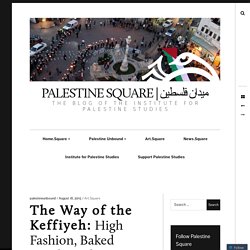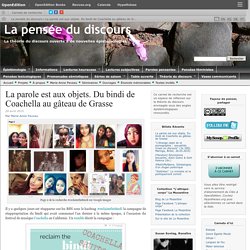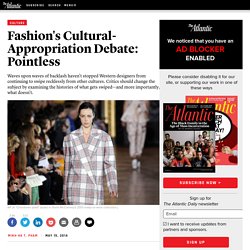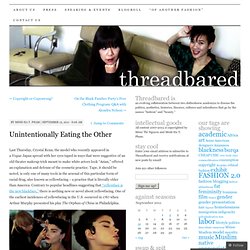

The Way of the Keffiyeh: High Fashion, Baked Goods, and “Israelization” As the Palestinian keffiyeh has become ubiquitous around the world, we look at the many ways its dynamic pattern has inspired countless individuals from the world of high fashion to bakers.

Some are just for fun and others address more serious matters, like subjugation of women and colonial appropriation. 1. High Fashion Keffiyeh Keffiyeh walks the runway: Many observers believe that the French luxury brand Givenchy was inspired by the keffiyeh for its Spring 2010 ad campaign: Spanish brand Zara, the world’s largest fashion house, cut shorts out of a keffiyeh: The campaign came under double criticism from Palestinians for failing to reference any Palestinian patrimony and from pro-Israel supporters for selling the keffiyeh pattern.
Keffiyeh dresses made it to the 2014 New York Fashion Week: 2. Artist Mona Hatoum crafted a keffiyeh out of women’s hair for her “Keffieh” art project. 3. Interior designers Alisha van Bone used the keffiyeh pattern for a craft room at a children’s art center. 4. La parole est aux objets. Du bindi de Coachella au gâteau de Grasse. Page 2 de la recherche #reclaimthebindi sur Google images Il y a quelques jours est réapparue sur les RSN sous le hashtag #reclaimthebindi la campagne de réappropriation du bindi qui avait commencé l’an dernier à la même époque, à l’occasion du festival de musique Coachella en Californie.

Un tumblr décrit la campagne : Première moitié de la page d’accueil du tumblr #reclaimthebindi Isis Madrid définit ainsi la campagne dans le magazine Good le 14 avril 2015 : “Reclaim the Bindi is a bold new movement that calls for an immediate stop to the use of cultural, religious and spiritual clothing, accessories, and decorations by people who do not belong to the groups for whom these items are sacred, special, and meaningful”. Le bindi : appropriation exotisante vs réappropriation militante La campagne repose sur des arguments mobilisant une double asymétrie : Fashion's Cultural-Appropriation Debate: Pointless - Minh-Ha T. Pham. Since around 2007, I’ve written about the politics of race, gender, and class in fashion.

These writings have been published in scholarly journals and popular media sites, including the research blog I co-founded called Threadbared. As a result, a regular and happy feature of my everyday life involves responding to media and public inquiries about fashion trends, events, or news items that have a distinct racial dimension. But I have to admit: I’m getting tired of fashion criticism. This is not because I’ve grown tired of thinking and writing about fashion. And it’s certainly not because I no longer think fashion is an important cultural and social activity. What I’m weary of is the predictable, limited, and unhelpful manner in which people talk about race in fashion. Unintentionally Eating the Other. Last Thursday, Crystal Renn, the model who recently appeared in a Vogue Japan spread with her eyes taped in ways that were suggestive of an old theater makeup trick meant to make white actors look “Asian,” offered an explanation and defense of the cosmetic practice.

Tape, it should be noted, is only one of many tools in the arsenal of this particular form of racial drag, also known as yellowfacing – a practice that is literally older than America. Contrary to popular headlines suggesting that “yellowface is the new blackface,” there is nothing new or novel about yellowfacing. One of the earliest incidences of yellowfacing in the U.S. occurred in 1767 when Arthur Murphy presented his play The Orphan of China in Philadelphia. What interests me about this moment of racial drag or “transformation,” as Renn’s called it, are the reactions to it and her own explanation of the decision to tape her eyes. White People, Dreadlocks, and Cultural Appropriation. The Difference Between Cultural Exchange and Cultural Appropriation. Yogaglo Patent Issued. On September 23rd, Yoga International broke the news that they (among others) had received a cease-and-desist letter from another website which also offers yoga videos for streaming (soon revealed to be YogaGlo).

It turns out, that YogaGlo had filed a patent application for their method of filming online yoga classes, and that some of YI’s early content fell under the broad description in the patent application: “...instructor at the head of the classroom with live-participants arranged between the instructor and the camera with a direct line of sight between the camera and the instructor allowing for the viewer participant to have unobstructed views while simultaneously allowing for the viewer participant to have live participants in the periphery, as if the viewer was attending a live class.
" “We quickly realized the implications of this patent,” says Yoga International Executive Director Todd Wolfenberg. The response was initially—well, intense. So What Happened Exactly? But why this?